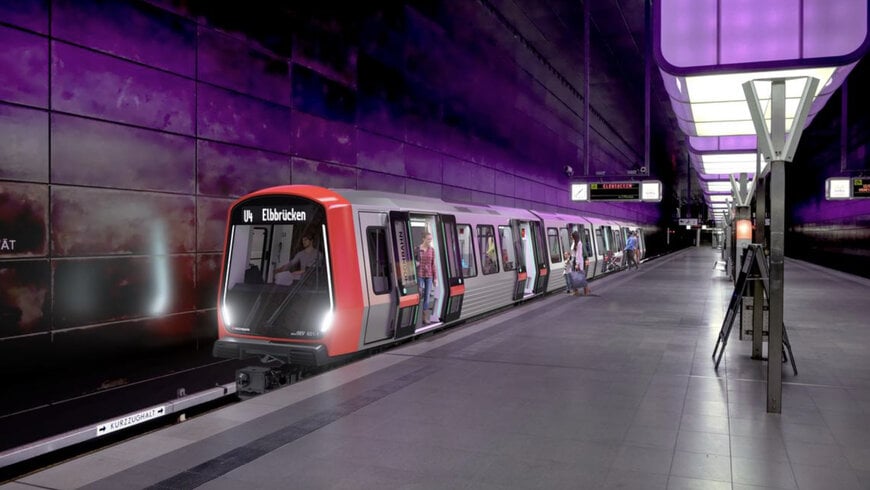railway-international.com
20
'25
Written on Modified on
How a quiet shift in logic could redefine urban transit
Alstom's Urbalis Fluence takes the CBTC experience a step further by merging interlocking functions into a train-centric architecture.
www.alstom.com

In the world of urban infrastructure, revolutions rarely announce themselves. They do not come with fireworks or press conferences. More often, they arrive quietly, tucked inside a control cabinet, humming beneath the floor of a train, or embedded in a line of code that changes everything.
That is what makes Alstom’s Urbalis Fluence so intriguing. It does not look like a revolution. But it might be one.
At first glance, it is just another signalling system, another acronym in the alphabet soup of rail tech. CBTC: Communication-Based Train Control. But dig deeper, and you will find something quietly radical. Urbalis Fluence does not just improve how trains are controlled. It changes who—or what—is doing the controlling.
And that shift, from track to train, might be the most important thing to happen to metros since the invention of the third rail, or the first time a train left the station without a driver.
The logic flip
For decades, trains have been passive players in a centralised game. They wait for instructions from trackside equipment: signals, sensors, interlockings, before they move. It is a system that works, but it is slow, rigid, and expensive to maintain.
Urbalis Fluence flips that logic. Instead of relying on the track to tell the train what to do, it puts the intelligence on board. Trains talk to each other. They make decisions in real time. They adapt. It is a bit like the shift from landlines to smartphones. The infrastructure does not disappear, it just becomes smarter, more distributed, and infinitely more flexible.
If that sounds abstract, think about USB-C. For years, plugging in a USB cable was a ritual of frustration. Wrong side. Flip. Still wrong. Flip again. Then came USB-C: reversible, universal, and quietly brilliant. Urbalis Fluence is the USB-C of rail signalling. It does not scream innovation. But it solves a problem so elegantly that once you see it, you wonder why it was not always this way.
Reference projects
Lille metro, France
Inaugurated in 1983, Lille Metro was one of the world’s first fully automated driverless metro systems. To support its continued evolution, Line 1 was modernised to support compatibility across a mixed fleet of both older 26-metre and newer 52-metre trains, for enhanced automation and increasing capacity.
Metro line 1 in Turin, Italy
In 2022, Alstom won a turnkey contract to revamp 58 trains and supply 14 new trains with its train-centric CBTC system for line 1 of Turin Metro. This upgrade will enhance safety, capacity, and efficiency, benefiting Turin residents' daily commutes across 27 stations.
Metro line U5 in Hamburg, Germany
Urbalis Fluence will be deployed for 25 km of new metro line U5. It will enable fully automated and driverless operation at 90-second intervals, improving connectivity and accessibility for up to 270,000 passengers daily.
The system is already live and could potentially run as often as every 60 seconds—a tight headway that’s more than just a number. It’s a shift in how a city breathes.
More frequent trains mean fewer cars. Less waiting. Less crowding. More time at home, at work, or anywhere but stuck on a platform. And it is not just about speed. Urbalis Fluence is designed to handle the messiness of real life. If a train breaks down, others reroute. If communication drops, the system does not panic. It adapts. It keeps moving.
That kind of resilience is not flashy. But in a world of aging infrastructure and rising climate pressure, it is essential.

Engineering green mobility
There is another layer to this story: energy. Urbalis Fluence is not just smarter—it is greener. By optimising train movements and reducing unnecessary braking, it cuts energy use by up to 30%. It also slashes the amount of trackside equipment needed, which means less steel, less cable, and less concrete.
In Hamburg, where the system is being deployed on the new U5 line, trains will run driverless every 90 seconds. That is not just a win for efficiency, it is a win for the planet.
But maybe the most interesting part of this story is not the tech. It is the people behind it.
Alstom’s engineers did not set out to build a smarter train. They set out to solve a problem: how to move more people, more reliably, with less impact. And they did it not by adding complexity, but by removing it—by asking what could happen if the train itself became the brain.
It is a reminder that innovation is not always about disruption. Sometimes, it is about clarity. About seeing a system not as it is, but as it could be.
Urbalis Fluence depends on cities willing to invest in long-term thinking. But it is a glimpse of what is possible when we stop accepting the status quo and start asking better questions.
- What if trains could think?
- What if infrastructure could adapt?
- What if the future of mobility was not about more—it was about smarter?
In a world obsessed with moonshots, Urbalis Fluence is something rarer: a grounded, elegant shift in logic that just might change everything.
And like all the best ideas, it hides in plain sight—quietly moving millions, one train at a time.
And like all the best ideas, it hides in plain sight—quietly moving millions, one train at a time.

